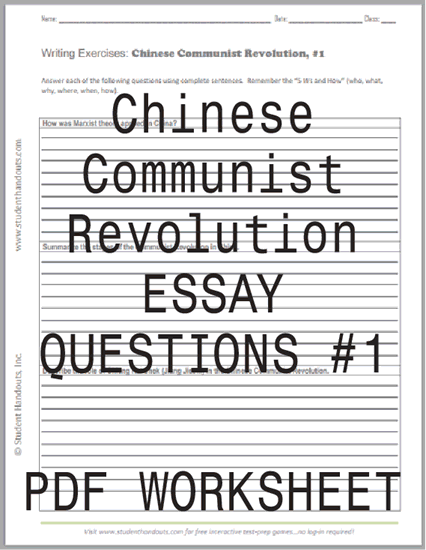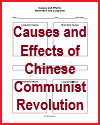| Chinese Communist Revolution Writing Exercises Sheet #1 |
|---|
| www.studenthandouts.com > World History > Chinese Revolution > Chinese Revolution Worksheets |
| Answer each of the following questions using complete sentences. 1. How was Marxist theory applied in China? 2. Summarize the stages of the Communist Revolution in China. 3. Describe the role of Chiang Kai-shek (Jiang Jieshi) in the Chinese Communist Revolution. |
|---|
 |
 |
|---|
|
Click here to print (PDF file). Answers will vary. Marxist theory in China was adapted to fit the country's largely agrarian society. Mao Zedong emphasized the role of the peasantry, rather than the urban proletariat, as the revolutionary force. Land redistribution, collectivization, and class struggle were key elements, while Maoism promoted continuous revolution to prevent the rise of capitalist tendencies within socialism. The Communist Revolution in China began with the struggle between the Nationalists (KMT) and Communists (CPC) during the Chinese Civil War (1927-1949). After Japan's defeat in WWII, the conflict resumed, culminating in the Communist victory in 1949. Mao Zedong established the People's Republic of China, followed by land reforms, collectivization, and social restructuring. Chiang Kai-shek, leader of the Nationalist Kuomintang (KMT), played a key role in the Chinese Communist Revolution by leading the Nationalist forces against the Communists during the Chinese Civil War. His government was weakened by corruption and poor public support, ultimately leading to the Communist victory in 1949, after which Chiang fled to Taiwan. |
|---|
| www.studenthandouts.com > World History > Chinese Revolution > Chinese Revolution Worksheets |









